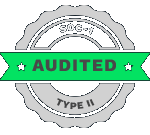Artificial Intelligence (AI) has been causing a shift and capturing the imagination of the tech industry for quite some time now! With its ability to analyze vast amounts of data and generate intelligent outputs, AI has become a game changer across industries, Saas included.
As a booming industry, Software as a Service (Saas) empowers businesses with on-demand access to powerful software applications through convenient subscription models. From intelligent automation to hyper-personalized user experiences, AI is not enhancing Saas platforms, its redefining what’s possible.
CXOs need to understand that it is important to employ tools integration that facilitate system integration, data integration, and application integration is high, driven by the widespread adoption of cloud computing, digital transformation initiatives, and the need for unified data views.
Whether you are a start-up owner looking to streamline your operations or a software developer seeking to stay ahead of the curve, understanding the impact of OpenAI SaaS integration is essential for success in the modern marketplace.
Table of Contents
- Introduction
- Choose the Right AI SaaS integration Model & Capability
- AI SaaS Integration Platform: Architecture & Integration Considerations
- Business Use Case First: Don’t Just Plug in AI Because You Can
- Prompt Engineering Is a Skill Set—Not a One-Time Task
- Human in the Loop (HITL) Strategy
- Conclusion: OpenAI Saas Integration – Future Outlook
Choose the Right AI SaaS integration Model & Capability
Once you have defined a clear business use case, the next step is selecting the right AI model and capabilities.
Selecting the right AI tool can significantly impact your workflow, scalability and data analysis. Choosing the wrong one can led to inefficiencies, poor user experience or extra cost.
How to choose the right fit:
Define your objective clearly: A well-defined strategy not only helps find the right tool but also establishes a benchmark to measure post implementation success. Using AI Analytics Tools can provide deep insight that aligns with growth objectives.
Scalability: A tool that can scale seamlessly with your business growth offers flexibility and longevity. Find tools that provide customizable SaaS integration services that can be tailored to your team’s growing need. Proper planning around scalability can support future proofing your investment against market changes and evolving industry standards.
Prototype and test: Use OpenAI’s playground or API sandbox to test responses from different models on your real data.
Cost and Return on investment: Understanding the cost implications of an AI is crucial in decision making. Data driven analysis can help justify the expense and guide your choice towards tools that offer the best value for money over the long haul.
The right choice isn’t always the newest model, it’s the one that fits your purpose. Strong alignment between problem and model drives better ROI and stronger adoption of your OpenAI SaaS integration strategies.
Recommended Reading:
- SaaS Management: Streamlining Your Subscriptions, Spend, and Efficiency
- Want Scalability and Data Backup Recovery for Your Business? SaaS In Cloud Computing May Be the Answer
- Magento AI Integration: Transform Your eCommerce Store Into an AI-Driven Revenue Engine
- How Does Next-Gen AI Integration in WordPress Websites Impact User Experience?
- How SaaS Integration can be the Game Changer for Small Businesses?
AI SaaS Integration Platform: Architecture & Integration Considerations
Data integration architecture is the framework that defines how data from various sources is collected, processed, and delivered to target systems for analysis, reporting, and operational use. A strong data integration strategy helps build solid architecture for maintaining data quality, consistency, governance & compliance and enabling data-driven decision making.

Here’s how to build an integration that works under real world load:
Use serverless or Queue-Based Architecture for independent tasks.
Cache model Outputs where possible to reduce Token costs.
Use Fallback Mechanisms if OpenAI’s API is down or Rate-Limited.
Reliable performance builds user trust, critical for long-term loyalty.
Building AI into your SaaS product isn’t just calling an API, it’s about building around it. A well-defined data integration architecture as well as the right AI SaaS platform which enables seamless data movement across systems and provides the foundation for scalable, reliable, and analytics-ready data which is essential for sustainable OpenAI Saas Integration.
Business Use Case First: Don’t Just Plug in AI Because You Can
AI is fascinating. OpenAI models like GPT-4 and beyond offer skills that feel futuristic, they can summarize complex data, generate human responses, write codes and even analyze sentiment. But just because you can plug the OpenAI into your SaaS integration platform, it doesn’t mean you should.
Regularly, businesses rush into opting for the SaaS integration services without a clear objective, seeking to benefit from the ongoing innovation trends. This results in half-baked features that confuse users, go over budget and offer minimal ROI.
Start with the Problem and not Technology
The first step is identifying business use cases where AI can drive meaningful improvement. Think about:
Where are users spending too much time?
What repetitive task can we automate?
If AI can’t address one of these pain points, it may not be the right time to implement it.
Examples of Purpose Driven AI in SaaS-
HR platforms using GPT to summarize Resume or generate interview questions.
CRM systems that use natural language queries to pull customer data instantly.
Prompt Engineering Is a Skill Set – Not a One-Time Task
Prompt engineering is the craft of designing and refining inputs (prompts) to elicit the desired output from the AI SaaS platform & AI models. Prompt engineering is crucial because it influences the performance and utility of AI language models. In Saas products, prompt quality directly impacts user experience, output accuracy, and product performance.
Best Practices:
Be specific as possible
Prompt Example:
Please provide an outline for a comprehensive report that explores emerging trends in remote workforce management for HR tech companies, focusing on the developments from 2021 onward. The outline should include an introduction, three main sections covering
Adoption of AI and automation in HR workflows.
Evolving employee engagement strategies in a remote-first world.
Compliance and data privacy challenges in distributed teams.
Supply the AI with examples
Prompt Example:
Healthcare SaaS: Generate a comparison table for two healthcare platforms, covering Pricing, EHR integration, Appointment Scheduling and Support.
Specify your desired output
Prompt Example:
List ten key milestones in the evolution of SaaS businesses from the 1990s till today. Use a timeline format with the year, major event, and a short explanation of how it shaped the SaaS ecosystem.
Split complex tasks into simpler ones
Prompt Example:
Write a blog on how AI is used in e-commerce.
Better sequence:
Outline a blog titled ‘Smarter Shopping: How AI is Powering the Next Generation of E-commerce.’ Include three main sections: ‘Personalization Engines,’ ‘Smart Inventory Management,’ and ‘AI in Customer Support.
Draft the opening paragraph (100–150 words) introducing how e-commerce businesses are adopting AI to drive conversions and improve customer experience.
Take an experimental approach to prompting
Prompt engineering is a new and growing field that requires an experimental approach. To get the best results, try different prompts and notice how small changes can lead to very different AI responses.
Human in the Loop (HITL) Strategy
Even with powerful AI like OpenAI’s model, human intervention is critical, especially in high-stakes or customer-facing applications.
What is HITL?
Human-the-loop (HITL) machine learning is a collaborative approach that integrates human input and expertise into the life cycle of machine learning and artificial intelligence systems. Instead of letting AI run fully autonomously, your AI SaaS platform uses a collaborative model, where humans review, refine, or approve AI outputs.
Strategy for AI-Enabled SaaS platforms
Define the critical Control points: Identify where human intervention is most valuable like Sensitive decisions, User facing outputs.
Design for collaboration, Not Override: Instead of replacing AI output, humans collaborate to validate, provide feedback that retrains, approve before publishing.
Build feedback loops: Capture every human intervention to improve model accuracy, identify gaps, inform future product features.
Monitor and Optimize the HITL (Human in the Loop) Workflow: Track KPIs like review time per week, correction frequency.
A well thought HITL (Human in the Loop) strategy doesn’t slow your SaaS integration platform, it elevates trust, performance, and user satisfaction while future proofing your platform against ethical and operational risk.
OpenAI Saas Integration – Future Outlook
Planning for OpenAI SaaS integration isn’t about chasing the latest buzzword. It is about solving real problems for your users and building features that last. With a clear use case, the right model, and thoughtful integration, AI stops being a shiny add-on and becomes a genuine advantage.
It’s not about chasing hype, but about delivering clear ROI, whether through new revenue streams, faster execution, or reduced costs. With proper governance and human oversight, AI strengthens trust and protects brand reputation while opening doors to bold innovation.
The SaaS companies that win with AI will be the ones who balance ambition with thoughtful execution—not because they can, but because it truly makes life easier for their customers. The future of businesses totally depends on the implementation of the correct OpenAI SaaS Integration strategies.
From AI strategy consulting to custom integration and prompt optimization, you need a trusted OpenAI SaaS integration & consulting service provider like BluEnt so that you can be assured of your AI adoption being practical, scalable, and impactful.












 AI SaaS Solutions for Operational Excellence and Business Efficiency
AI SaaS Solutions for Operational Excellence and Business Efficiency  AI SaaS RAG Workflows: Smarter Knowledge Retrieval for CXOs
AI SaaS RAG Workflows: Smarter Knowledge Retrieval for CXOs  SaaS Security 2025: How to Stay Ahead of AI-Powered Threats
SaaS Security 2025: How to Stay Ahead of AI-Powered Threats  Serverless SaaS in 2025: Build Scalable Multi-Tenant Apps with Less Code
Serverless SaaS in 2025: Build Scalable Multi-Tenant Apps with Less Code 
